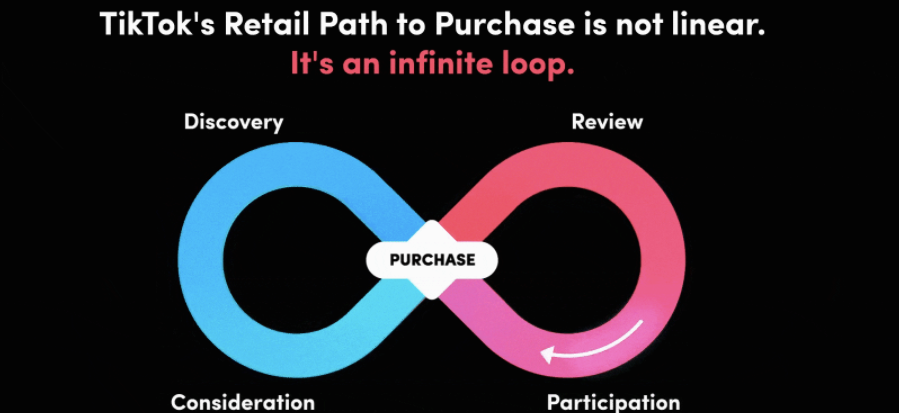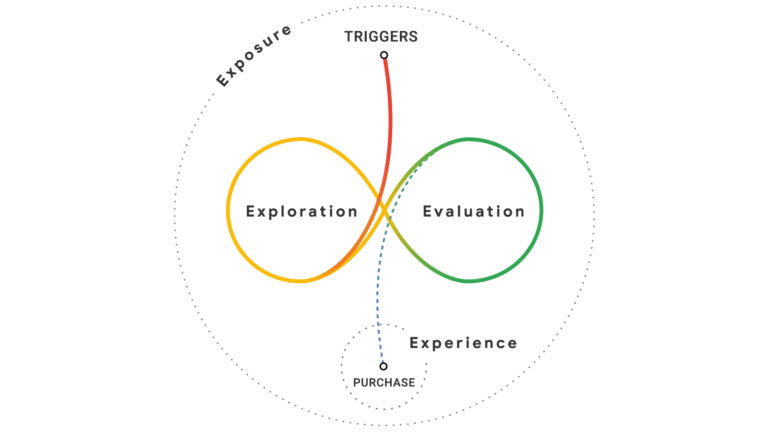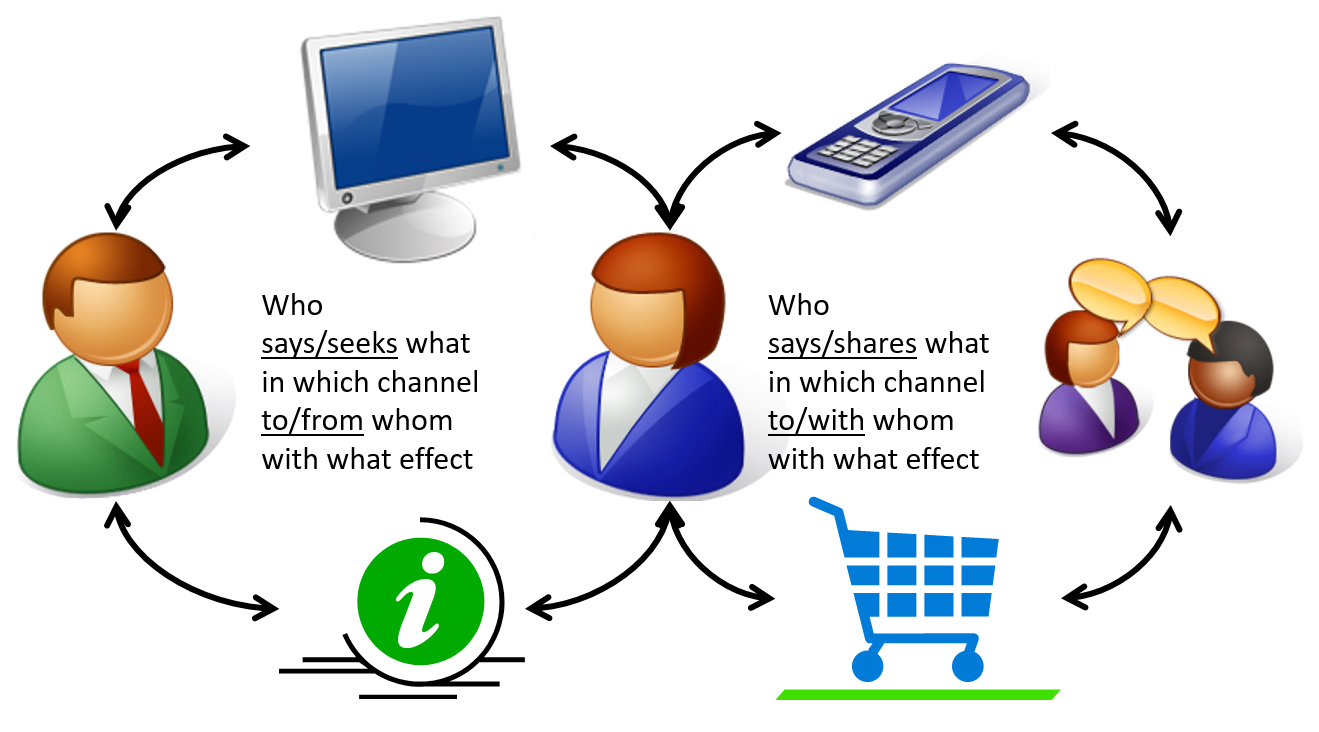YouTube, the second most visited website in the world, has changed how we consume content and created a huge marketing opportunity for brands.
But how does YouTube marketing work, and how effective is it as a marketing channel?
In this guide to YouTube marketing, you will learn the different types of videos that produce the best content marketing results and how to leverage this top social media platform.
What Is YouTube Marketing?
YouTube marketing is the process of promoting a brand, product, or service through video content on the YouTube platform.
This type of marketing involves creating videos to increase brand awareness, engage a target audience, and drive sales and revenue.
The key to successful YouTube marketing is to create high-quality, engaging video content that resonates with your target audience and delivers value.
YouTube viewers say good content tells a good story; It’s relevant to their interests, expands their perspectives or ways of thinking, and makes them feel something emotionally.
Organic YouTube Marketing
There are 10 types of organic videos that brands can use for YouTube marketing:
- Social media videos (e.g., YouTube Shorts, Stories, and Community posts).
- How-to videos and/or explainer videos.
- Branded stories (e.g., short films, series, and/or documentaries).
- Interviews with influencers and/or subject matter experts.
- Thought-leadership videos with company leaders.
- Stories about your organization.
- Customer testimonials, case studies, and/or success stories.
- Product demonstrations, either animated or actual.
- External training videos and/or formal education on topics.
- Livestreaming videos (e.g., YouTube Live and Premieres).
More than 500 hours of content are uploaded to YouTube every minute, so it’s a crowded space. That’s why YouTube marketing is not just about uploading a video and being organically discovered.
YouTube Paid Video Marketing
If you’re establishing a new brand or channel on YouTube, you can get faster results with a paid strategy as you organically build your number of subscribers.
There are several YouTube and Google Ads solutions that support different business goals and marketing objectives – from increasing brand awareness to building consideration or driving action.
In Google Ads, you can create compelling video campaigns with various video ad formats to engage customers in different ways on YouTube and across Google video partner sites.
For paid YouTube advertising strategies, there are three main approaches:
1. Ads For Increasing Brand Awareness
- Bumper ads: Highlight your brand’s most memorable messages with quick, non-skippable ads up to six seconds long.
- Non-skippable in-stream ads: Make sure potential customers see the full story with a non-skippable ad that plays before, during, or after their video on YouTube and across websites and apps running on Google video partners.
- Masthead ads: Reach a massive audience in a short amount of time by featuring your brand’s ad at the top of the YouTube home feed on desktop, mobile, and TV screens.
2. Ads For Boosting Interest And Consideration
- Skippable in-stream ads: Reach as many people as possible on a budget with ads that allow viewers to skip the ad after five seconds and run before, during, or after a video plays.
- YouTube BrandConnect: Connects creators in the U.S., Canada, or the U.K. with brands for branded content campaigns.
3. Ads For Driving People To Purchase, Subscribe, And Take Action
- In-feed video ads: Use images to reach people as they browse their YouTube Home and Watch Next feeds, Discover feed, and the Promotions and Social tabs on Gmail.
- Video action campaigns: Reach as many people as possible on your budget with skippable ads that run before, during, or after a video plays.
How Can Marketers Use YouTube?
Businesses and brands can use YouTube in various ways to achieve their marketing goals.
Out of the 10 types of YouTube videos you can produce (listed above), a survey from the Content Marketing Institute found 5 types of these videos produced the best content marketing results.
1. Social Media Videos
Social media video brand campaigns on YouTube have one thing in common: They provide value to their audience. They also have an emotional hook that will stimulate sharing.
Examples:
- Dove India launched Project #ShowUS, a social video campaign intended to challenge stereotypes of what is and isn’t considered beautiful.
- Gillette launched We Believe: The Best Men Can Be, a social video campaign aiming at a modern interpretation of manhood.
- BuzzFeed Video and Purina Friskies launched Dear Kitten, a social video campaign featuring an older house cat teaching a kitten how to be a cat.
2. How-To Videos
How-to videos educate audiences. Brands can use these to build trust and credibility with the audience, as well as establish themselves as an expert in their industry.
Here are some recent examples of successful YouTube marketing campaigns that used how-to videos or explainer videos:
- L’Oréal has created a series of how-to videos, helping to fulfill the beauty aspirations of consumers worldwide. This includes How To Apply Lash Idôle Mascara by Lancôme USA, which has 15.6 million views.
- Samsung India used ‘how-to’ videos to promote its latest Galaxy A73 5G, including How To Take Screenshots With A ‘Palm Swipe’ On Your Samsung Smartphone, which has 60 million views. These videos provided in-depth demonstrations of the features and capabilities of the devices, helping consumers to understand the value of these products.
- Google used explainer videos to educate consumers about its various products and services, including A (Home) Movie About How Google Search Works, which has 91 million views. These videos are helpful in simplifying complex topics and making them accessible to a wider audience.
3. Branded Stories
The key to success with branded stories is to create engaging and compelling content that resonates with the target audience and supports the brand’s overall marketing goals.
Here are a few examples of successful YouTube marketing campaigns that used branded videos in recent years:
- Clash of Clan’s Lost & Crowned tells the story of Larry’s first day on the job, guarding the Red King’s crown with his big brother Peter on a late-night shift. What could possibly go wrong? This short film got 62.5 million views and 1.3 million engagements.
- Hyundai Worldwide’s Hyundai x BTS I Hydrogen Documentary is a short documentary that aims to increase Gen Z’s involvement in hydrogen and to make a difference through solidarity. The use of infographics also helps people understand hydrogen better. This documentary got 12 million views and 124,000 engagements.
- Patagonia’s The Fight For America’s Public Lands is a feature-length documentary about America’s system of public lands and the fight to protect them. One part love letter, one part political exposé, this film got 2.8 million views and 18,200 engagements.
4. Customer Testimonials
Brands can showcase positive customer experiences and testimonials in their YouTube videos, helping to build trust and credibility with the audience.
Some recent examples of successful YouTube marketing campaigns that used customer testimonials, case studies, or success stories include:
- AmeriSave Mortgage has created a series of customer testimonials. For example, Christine’s Refinance is the story of how AmeriSave’s loan originators helped Christine, a single mother, get a low rate when she decided to refinance her mortgage on her New Orleans home – saving her hundreds of dollars a month while also allowing her to pay off debt. This customer testimonial got 3.9 million views.
- Sell on Amazon has created a series of studies; for example, New Republic, which shares the case study of the digitally-native footwear brand, got 8.5 million views.
- Shopify has created a series of success stories; for example, Maye-Williams Active, which tells the story of the 100% Black-owned activewear company, got 22 million views.
5. Interviews With Influencers
By partnering with influencers or subject matter experts, brands can tap into their expertise, reach a new audience, and establish a strong connection with their target market.
Here are some recent examples of successful YouTube marketing campaigns that used interviews with these individuals – or even people on the street – to create engaging and informative content on YouTube:
- Nike’s campaign, You Can’t Stop Us, featured a series of interviews with various athletes and influencers. The videos highlighted the resilience and determination of these individuals and showed how they overcame challenges and continued to pursue their goals despite the COVID-19 pandemic.
- Luxe Collective, which buys and sells pre-owned luxury brands, has created a series of street interviews; for example, the video, Stopping People On The BUSIEST Street In Europe To Ask 1 Question, has 34.5 million views.
What Are The Benefits Of YouTube Marketing?
YouTube marketing can help businesses grow their brand and reach new audiences on the video-sharing platform in several ways.
Reach A Global Audience
YouTube has over 2 billion monthly logged-in users, making it the world’s largest social video platform. And every month, they watch over a billion hours of video on YouTube.
There are localized versions of YouTube in over 100 countries worldwide across 80 languages. This enables brands to reach a massive global audience with customized local campaigns.
Reach Your Potential Customers
YouTube.com is the no. 2 most visited website globally, behind Google.com. This means the video-sharing site is the world’s largest social media platform.
YouTube enables virtually any business in every industry to reach potential customers when and where they’re searching, browsing, or watching video content.
Integrated With TV Viewing
Despite its origins as a website and its evolution into a mobile app, YouTube is now being watched by a growing percentage of Americans on connected TVs (CTVs).
According to Insider Intelligence, 38.1% of the time spent daily on YouTube in 2023 is on connected devices like smart TVs and game consoles, 48.5% on mobile devices like smartphones and tablets, and only 13.4% on desktops and laptops.
So, how do you leverage YouTube for your brand in today’s multiple-device era?
Engage The Segments That Matter Most To Your Business
YouTube enables advertisers to go beyond demographics to target affinity segments (people whose interests and habits relate to what their business offers) and in-market segments (people actively researching or planning to purchase products or services like theirs).
So, YouTube connects you to the people who matter most to your business, from foodies down the block to business buyers of industrial food-service equipment for commercial kitchens across the country.
Engage Consumers At Every Stage Of Their Journey
Videos tend to be more engaging than other forms of content, such as text or images.
A Google/Talk Shoppe study in 2020 found 75% of respondents said advertising in YouTube videos makes them more aware of new brands or products.
And Google data found 90% of people globally say they discovered new brands or products on YouTube.
To bolster brand awareness and convert leads, many brands use a full-funnel YouTube marketing strategy encompassing multiple objectives.
Measure Channel Performance, Brand Lift, And Conversions
You can use YouTube Analytics to better understand your video and channel performance with key metrics like watch time, views, likes, shares, and comments.
You can use Brand Lift surveys to measure the effectiveness of your video ads with key metrics such as ad recall, brand awareness, and consideration.
And you can use Google Analytics 4 (GA4) to measure engaged-view conversions (EVCs) from YouTube. This enables you to measure all the different stages of the buyer journey.
How Effective Is YouTube Marketing?
The effectiveness of YouTube marketing can vary depending on several factors, such as the target audience, the relevance and quality of the content, and the marketing goals.
However, when executed correctly, YouTube marketing can be a highly effective tool for brands and businesses.
It also helps to have an accurate model of how people use YouTube to move through the customer journey on their own terms to understand how to make your video marketing more effective.
Research reveals TikTok’s impact on the consumers’ purchase journeys and found the path to purchase on TikTok looks more like an “infinite loop” than the traditional funnel, which William W. Townsend first proposed in 1924.
 Screenshot from TikTok.com/business, March 2023
Screenshot from TikTok.com/business, March 2023But the ‘Messy Middle’ of the Purchase Journey model was based on research by Google’s consumer insights team in the U.K., which found that consumers loop between exploring and evaluating the options available to them until they are ready to purchase.
 Screenshot from Thinkwithgoogle.com, March 2023
Screenshot from Thinkwithgoogle.com, March 2023There is also a third model of a similar looping process for discovering new videos and sharing compelling content, inspired by reading “The People’s Choice,” a book by Paul Lazarsfeld, Bernard Berelson, and Hazel Gaudet, published in 1948.
 Image from author, March 2023
Image from author, March 2023This landmark study of American voters during the 1940 and 1944 presidential elections found that interpersonal interactions and word of mouth were more significant than mass media for most voters.
Based on their research, the authors proposed a two-step flow model of communication. The first step, from media sources to opinion leaders, was a transfer of information, but the second step, from opinion leaders to their followers, also involved interpersonal influence.
YouTube marketing works much more like word-of-mouth marketing and a lot less like mass media marketing. The journey people take to become loyal customers isn’t a straight shot down a funnel. Stuart Hogg accurately observed in “Customer journey mapping: The path to loyalty”:
“In reality, this journey is often more like a sightseeing tour with stops, exploration, and discussion along the way – all moments when you need to convince people to pick your brand and stick with it instead of switching to a competitor,”
Once you understand how the social video platform works, then you are much more likely to achieve the six key benefits of YouTube marketing that are spelled out above.
YouTube Marketing Tools
Here are some of the best tools to help you with YouTube marketing:
Audience Research Tools
Tools like Find My Audience and SparkToro can help you to understand who your most valuable customers are on YouTube and which YouTube channels, social accounts, websites, press publications, and podcasts they engage with – so your video marketing efforts can be better targeted and more effective.
Keyword Research Tools
YouTube Analytics, Google Trends, and YouTube Search Predictions are just some of the keyword research tools for YouTube.
These will help you find relevant keywords and identify popular keywords and topics related to your brand or industry, which will help you optimize your YouTube videos for search.
Video Editing Software
Uploads of short-form content on YouTube have grown 135% in Q2 of 2022 compared to 2021, according to Tubular Labs.
To keep up with this trend, you can use video editing software such as Adobe Premiere Pro and Apple’s Final Cut Pro or iMovie to edit and enhance your YouTube videos, including adding music, sound effects, and special effects.
YouTube Thumbnail Makers
If your account is verified, you can add a custom video thumbnail on YouTube.
And tools like Canva, Placeit, and Adobe Express can help you create stunning YouTube thumbnail images for your videos that will increase your YouTube views and subscribers without design skills or expensive graphic design software.
Social Media Management Tools
Schedule and monitor your videos on YouTube and respond to comments as well with tools such as Hootsuite, Sprout Social, Buffer, or Later.
You may also use them to publish your videos on other social media platforms, helping you to reach a wider audience and drive more traffic back to your YouTube channel.
YouTube Directories
The YouTube Creative Directory contains lists of 15 collaborative partners for every stage of production and 5 affordable do-it-yourself platforms.
Meanwhile, the YouTube Services Directory can help YouTube creators, artists, media companies, and other content creators find service providers to help them grow their businesses.
Digital Analytics
Measuring your results starts with YouTube Analytics, which helps you understand your video and channel performance with key metrics and reports in YouTube Studio.
It incorporates the data and reports available in Google Ads, as well as Google’s lift measurement tools, which enable you to get fast, actionable results across the entire consumer journey.
And it includes Google Analytics, which collects data from your websites and apps to create reports that provide insights into your business.
Summary
By now, you’ve learned the benefits of YouTube marketing, a two-step flow model for effective YouTube marketing, and seven types of marketing tools that should be in your toolkit.
So, is that enough storyboarding? Are you ready to shoot something?
Well, before you do, you may want to read 10 YouTube Marketing Strategies & Tips (With Examples).
Of course, you can always shoot first and ask questions later. But it never hurts to learn lessons from other brands that have developed content strategies that have resonated with 21st-century consumers.
More Resources:
Featured Image: Chaay_Tee/Shutterstock
